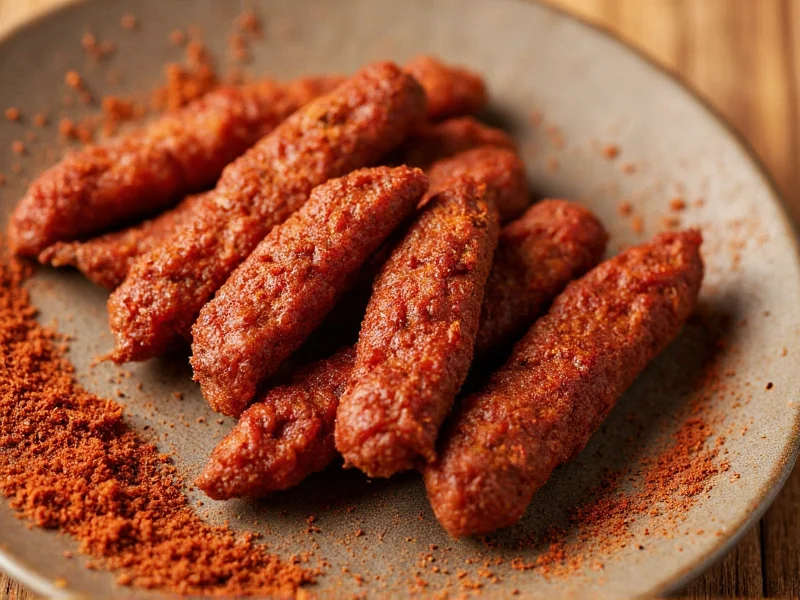Suya seasoning represents one of West Africa's most beloved culinary traditions, with roots tracing back to the Hausa people of Nigeria. This vibrant spice mixture transforms simple cuts of meat into flavorful street food delicacies enjoyed across the continent and increasingly worldwide. Understanding its components and proper usage opens doors to authentic African cooking experiences.
Historical Background and Cultural Significance
Originating among the Hausa communities in Northern Nigeria, suya has evolved from a regional specialty to a national street food phenomenon. Vendors traditionally grill thinly sliced beef, chicken, or goat meat over open flames after marinating it in the signature spice blend. The preparation method and seasoning reflect centuries of culinary tradition, with variations emerging across different West African regions while maintaining the essential flavor profile.
Essential Ingredients in Authentic Suya Seasoning
The magic of suya seasoning lies in its balanced combination of heat, nuttiness, and earthy spices. While regional variations exist, the foundation remains consistent across most traditional recipes.
| Core Ingredient | Flavor Contribution | Traditional Proportion |
|---|---|---|
| Ground Roasted Peanuts | Nutty base, texture | 30-40% |
| Cayenne Pepper | Primary heat source | 15-20% |
| Dried Ginger | Warmth, earthiness | 10-15% |
| Garlic Powder | Savory depth | 8-12% |
| Onion Powder | Sweet undertones | 8-12% |
| Smoked Paprika | Smoky complexity | 5-10% |
| Ground cloves | Subtle sweetness | 2-5% |
Regional Variations Across West Africa
While Nigerian suya represents the most recognized version, neighboring countries have adapted the seasoning to local tastes:
- Northern Nigeria: Features higher peanut content and intense heat from local peppers
- Ghanaian variation: Incorporates more ginger and sometimes includes dried shrimp powder
- Cameroonian style: Uses additional smoked fish powder for umami depth
- Street vendor blends: Often include secret ingredients like dried crayfish or local herbs
How to Use Suya Seasoning in Your Cooking
Suya seasoning extends far beyond its traditional application with grilled meats. Modern cooks have discovered versatile uses that maintain authenticity while adapting to different culinary contexts.
Traditional Meat Preparation
For authentic suya, thinly slice beef or chicken against the grain, then marinate for at least 2 hours (overnight preferred) in a mixture of suya seasoning, vegetable oil, and a splash of lemon juice. Thread onto skewers and grill over charcoal for best results. The peanut component creates a distinctive crust when exposed to high heat.
Creative Modern Applications
Chefs worldwide now incorporate suya seasoning into diverse dishes:
- As a dry rub for roasted vegetables, particularly sweet potatoes and cauliflower
- Mixed into mayonnaise or yogurt for flavorful dipping sauces
- Stirred into soups and stews for depth of flavor
- Used as a seasoning for popcorn or roasted nuts
- Added to burger patties for an African-inspired twist
Authentic Homemade Suya Seasoning Recipe
Creating your own suya seasoning ensures freshness and authenticity while avoiding commercial blends that often contain fillers. This recipe yields approximately 1 cup of seasoning.
Ingredients
- ½ cup finely ground roasted peanuts (unsalted)
- 2 tablespoons cayenne pepper
- 1½ tablespoons dried ginger
- 1 tablespoon garlic powder
- 1 tablespoon onion powder
- 2 teaspoons smoked paprika
- 1 teaspoon ground cloves
- 1 teaspoon black pepper
- ½ teaspoon salt (optional)
Preparation Method
- Roast raw peanuts in a dry skillet over medium heat until fragrant (3-5 minutes)
- Grind roasted peanuts to a fine powder using a spice grinder
- Combine all ingredients thoroughly in a bowl
- Sift mixture through a fine mesh strainer to ensure uniform texture
- Store in an airtight container away from light and moisture
This authentic suya spice blend maintains quality for up to 3 months when stored properly. For extended shelf life, keep in the refrigerator. The peanut component may separate over time—simply stir before use.
Storage Techniques for Maximum Freshness
Proper storage preserves the complex flavors of homemade suya seasoning:
- Use dark glass or opaque containers to protect from light exposure
- Keep away from heat sources like stoves or direct sunlight
- Include a silica gel packet to absorb moisture in humid climates
- Freeze in ice cube trays covered with oil for long-term preservation
- Refresh stale seasoning by briefly toasting in a dry pan
Perfect Pairings: Dishes That Shine with Suya Seasoning
Certain foods particularly benefit from suya seasoning's distinctive flavor profile:
- Grilled meats: Beef sirloin, chicken thighs, and lamb shoulder absorb the seasoning best
- Vegetables: Eggplant, bell peppers, and onions develop wonderful caramelization
- Starchy sides: Yam, plantains, and boiled potatoes balance the heat
- Dipping sauces: Combine with yogurt or mayonnaise for cooling contrast
- Grain dishes: Sprinkle over cooked rice or couscous for instant flavor
Substitutes When Suya Seasoning Isn't Available
While nothing perfectly replicates authentic suya seasoning, these alternatives provide similar flavor profiles:
- Mixture of smoked paprika, cayenne, and peanut butter (for immediate use)
- Tandoori spice blend with added peanuts and extra cayenne
- Harissa paste combined with crushed peanuts for texture
- DIY blend using equal parts chili powder, ginger, and ground nuts
For best results when substituting, add a touch of smoked salt to mimic the traditional charcoal-grilled flavor that defines authentic suya.
Nutritional Profile and Dietary Considerations
Suya seasoning offers more than just flavor—it contributes nutritional benefits while accommodating various dietary needs:
- Naturally gluten-free and suitable for most dietary restrictions
- Rich in healthy fats from peanuts when used in traditional preparations
- Contains capsaicin from peppers, which may boost metabolism
- Provides small amounts of vitamins B6 and E from the spice components
- Low sodium option available by omitting added salt
Those with peanut allergies should exercise caution, as traditional suya seasoning contains ground peanuts. Alternative versions using sunflower seeds or omitting the nut component entirely can accommodate allergy concerns while preserving much of the flavor profile.











 浙公网安备
33010002000092号
浙公网安备
33010002000092号 浙B2-20120091-4
浙B2-20120091-4